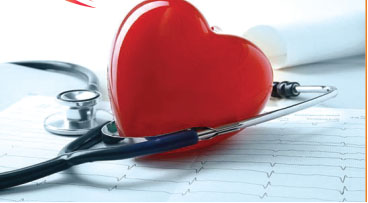Chest Pain – Getting To The Heart Of It

He had a history of gastric reflux and had experienced “heartburn” before, which he knew was just due to the backflow of acid from the stomach into his swallowing tract causing a burning sensation in the chest. So when he developed chest pain whilst walking to work one day, he thought it was merely heartburn and bore his discomfort. The pain came and went for the next 3 days and when he started feeling tired and breathless he finally decided to see a doctor. His ECG showed that he had a heart attack and by that time, his heart was already damaged. It was only functioning at half strength.
She also had chest pain on and off and had been concerned about heart disease. After consulting with a cardiologist and undergoing some tests she was told that her chest pain is not from her heart but likely due to chest wall muscle strain.

Almost all of us will experience chest pain at one time or another in our lives. We often wonder what the cause could be but almost always will think “could it be my heart?” or “will I suddenly die?”. And rightly so, because heart diseases are becoming more common in our community. If the patient does not seek help in time, it can be fatal. After cancer, heart disease is the second most common cause of death worldwide.
What then do we make out of the chest pain that we might experience? By and large chest pain can be due to problems in the heart, large blood vessels in the chest, chest wall, lungs and swallowing tract. Apart from heart disease, the most common causes of chest pain are chest wall muscle injury and gastric reflux disease. The question is how do we differentiate one from the other?

If your chest pain is due to the heart, the most likely reason is narrowing of the artery(s) of the heart or a medical condition called atherosclerosis of the coronary arteries. This condition can lead to a heart attack, which carries a relatively high risk of death. Less commonly, narrowing of the valve of the heart or a tear in the aorta (outflow vessel from the heart) can also cause chest pain. These conditions are very serious and may also be life threatening.
Chest pain from the heart or “angina” typically is felt as a squeezing chest tightness that is not localized to a particular spot. It is typically brought on by exertion and relieved by rest. It can sometimes radiate to the neck, jaw or arms. The problem however, is that sometimes it is difficult to be sure of the cause because in some patients, especially women, diabetics and the elderly, the pain can be quite atypical. Sometimes there is no pain at all but only breathlessness or discomfort in the chest.

The important thing is to know the risk factors that can predispose an individual to heart disease. Major risk factors include smoking, diabetes, family history of heart disease or heart attack, high blood pressure, high cholesterol, obesity and obstructive sleep apnoea. If you or your loved one has one or more of these risk factors and also experience chest pain, it is prudent to seek medical advice. Because your doctor will obviously not be able to “see” the arteries of your heart at the clinic, some tests may be required to evaluate the possibility of heart disease. The kind of test(s) you require depends on the nature of your chest pain as well as the risk factors that are present. If the chest pain is typical of angina, a more detailed and accurate test is required. Conversely, if the pain is not typical, then simple, less invasive tests are employed to exclude heart disease.
Prevention is always better than cure. You can make a difference and reduce your risk of heart disease by eating healthily, exercising regularly, targeting a healthy weight and importantly avoid or stop smoking completely. But if you do experience chest pain, get yourself evaluated early. If you have risk factors and your chest pain is typical of angina and persists for 15 minutes or more, get immediate attention because if it is a heart attack, every minute counts!


